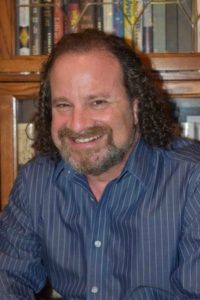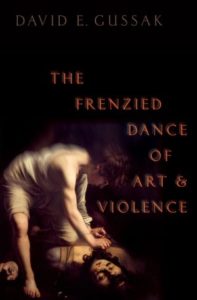Article courtesy of the Tallahassee Democrat | Written by Marina Brown

Florida State University Professor David Gussak, former Chairman of the Department of Art Education and currently Project Coordinator for Art Therapy in Prison’s Program, is a beloved presence within the university.
He is affable, funny, approachable, and devoted to using art as a means to enter into the “internal spaces” of those who create art, where the energies that propel actions of all kinds can be examined — even those actions which may be reprehensible — or even deadly.
From experience gathered over nearly 30 years working in art therapy with psychiatric patients and the incarcerated, Gussak believes that offering them the opportunity to create art, and interpreting the artistic output of such individuals has the potential to change them. It may also allow us to better understand the components of what drives their acts.
Stepping back and taking a long and comprehensive look at what he understands from a lifetime of interacting with often violent prisoners and their art, as well as viewing famous artistic works depicting violence, or art that was created in times of social upheaval and violence, Gussak has written what he calls his, “final book.”
Considering an ‘aggressive will’
“In the Frenzied Dance of Art and Violence,” I’ve said all I had to say,” he chuckles. But what a panorama he covers.
Always as readable as an historical novel, the book is part psychiatric description, part historical grounding, part artistic critique, held together by a dozen fascinating biographies of famous troubled artists, innocents trapped in horrific times, as well as mentally ill and depraved serial killers, all of whom created abundant works of art.
Yet the book is not just a chronicle of paintings of atrocious things or individuals. Indeed, Gussak seeks to demonstrate to the reader the dynamic relationship between art and violence. Why he, and other experts, believe that at the core of any creative process there lies aggression and sometimes worse.
In “The Frenzied Dance of Art and Violence,” Gussak posits that in order to be truly creative, one must have an “aggressive will” to break out of tradition.
Cataloguing the artists
He cites Freud, Jung, and particularly Ellen Dissanayake as believing that the impulse to violence is the same as the impulse to create — and that from such energy may come great art, or art whose subject matter is violence itself. And yes, it may also reveal narcissism, grandiosity, and even psychopathy.
For understanding and to illustrate examples of how art and violence seem woven in an eternal dance, at once compelling, sublimating, inspiring, and explaining one another, Gussak has divided the artists he discusses into six groups:
First, those who are narcissistic and grandiose, like Michelangelo, Botticelli, Caravaggio and Cellini. A second grouping is of the mentally ill or those with substance abuse issues, like Modigliani and Pollock.
Another group consists of those who have responded to conflicts and violence around them such as DaVinci, Goya, Traylor, and even Norman Rockwell as he painted the subjugation of African Americans during Jim Crow.
A fourth group are the victims and perpetrators of violence, such as those of the Holocaust, and Hitler himself — a man who had always considered himself a painter.

Disturbing look at psychopaths
The fifth and most disturbing group that Gussak has compiled consists of psychopaths, serial killers with monikers like: Night Stalker, Gainesville Ripper, Cross Country Killer, and finally, John Wayne Gacy and Charles Manson. The final examination of art and the artist is of murderer Charles Bronson, who exemplifies how art can also act as catharsis and sublimation of the violent energies inside.
Gussak acknowledges that the section on serial killers was hard to write. “Between us and one of them there may be one degree of separation,” he says. “And yes, I experienced anxiety and nightmares writing that chapter.”
He says that during his work when he has sat in art therapy sessions with people who have committed terrible acts he is hypervigilant, hyper aware of his surroundings, cognizant of what’s “behind the curtain,” and of what such people are capable.
And yet, he says, “They all need our attention, whether they deserve it or not.” Gussak says that, “art offers such people a kind of escape, a refuge, the ability to be themselves and to channel the aggressive energies in a safe way.”
‘Murderabilia’ and hope
Finally, Gussak writes about a little-known phenomena called the collection of “murderabilia,” the purchase of artifacts and art by those who have produced artistic works after having committed heinous crimes.
Yet for Gussak, whose office is filled with art made by incarcerated persons, “The Frenetic Dance of Art and Violence” is more than just an examination and critique of art pieces made by disturbed persons or those whose acts of violence have harmed others.
It seems instead to be a treatise of hope. Hope that while acknowledging that aggression, vanity, sociopathy, even murderous impulses may exist, there are avenues through which these drives may be sublimated and controlled.
After a lifetime examining the output of both professional artists and that of the disturbed, David Gussak seems to believe that the intricate dance of violence and art is one that can lead to humanization and perhaps even peace.